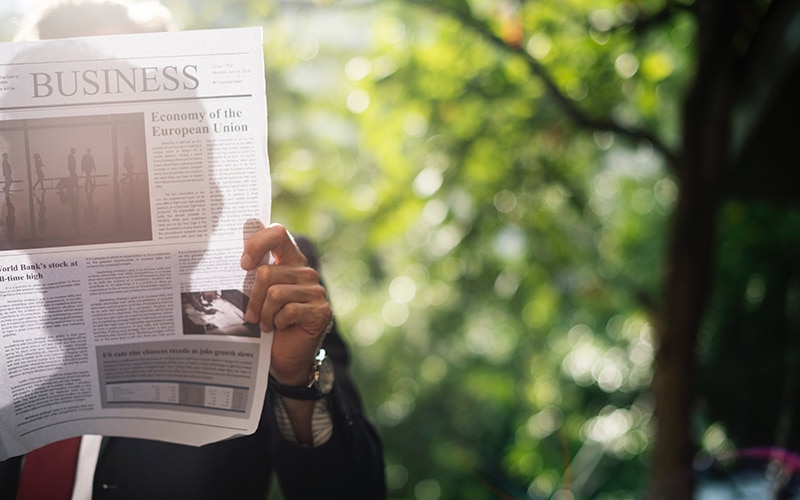Fear, Greed and Generosity, All in a Day’s News
Last week I was traveling across the country. Sometimes, I’ll pick up a newspaper or two. Today, it’s the USA Today and the Wall Street Journal. I’ve got a friend who always told me to read the newspaper for the insight that others might miss. In reading USA Today, I can’t help seeing the themes of fear, generosity and greed.
- A gunman’s attack at a bank in Florida promotes fear. “Could it be me next?” some might ask. Others simply shake their head and wonder what could make a person do this?
- Still more fear. Longtime corruption in Chicago politics. A culture of intimidation.
- There’s a story too about law schools. Too many students, too little selectivity in the admissions process means for low passage of the bar exams. All the while students rack up student loan debt sometimes in the hundreds of thousands, so schools can get paid. Greed at the expense of others.
- There’s the accusation that Eddie Lampert, CEO of Sears, stripped the company of its assets in order to capitalize on its decline. Meanwhile, in its shriveled state, Lampert now seeks to buy back the assets. Classic strip then steal—a greed play.
- Of course, there’s continued news about phone scammers trying to steal your identity and your money. Fear and greed both.
- But there’s hope. In the midst of the government shutdown (now temporarily ended), there are the stories of celebrities bringing meals to government workers. They ease the burden of others. Generosity.
- And then perhaps my favorite story: it’s a story about six superpower real life dogs who perform amazing feats of rescue, crime fighting and comfort. There’s Reef, a monstrous Newfoundland lifeguard dog who rescues people in perilous water. Or there’s border collie Henry who wears goggles and performs avalanche rescues in the Canadian Rockies.
These dogs perform these heroic acts—without holding back, grateful to serve. Now that’s a picture of generosity.
Daily news, take two
Same trip, same airplane, but now it’s the Wall Street Journal. The Friday, January 25th, 2019, edition to be correct.
The same themes are jumping out at me. Fear. Greed. And Generosity.
(By the way, let me start out by saying the WSJ cost me $4.00. I’m not sure where to lump that tidbit. For years, I’ve had to admit that the very look of the WSJ is impressive. Just holding one in your hands makes you look intelligent. People assume that you can read it and understand it. Anyhow, I digress.)
There’s news about the government shutdown on the front page. Fear news: if the shutdown doesn’t end, then there’ll be more cancelled flights, longer waits and inconvenience. There’s a quote from a Jet Blue executive: “We are close to a tipping point.”
Right below that story is a colorful graphic: “Financial scams on seniors increase.” The WSJ must’ve pulled from some of the mojo of USA Today. This kind of stuff makes people worry.
Maybe we shouldn’t call it fake news but fear news. And I’m not even past the front page yet! Oh, on page 3: cities are stashing away money for fear of recession. Now that’s good news.
While I’m tempted to stop reading, there’s good news, of course:
- Starbucks boosted sales;
- Intel reported a 9% gain;
- PG&E shares surged;
- Bristol swings to profit;
- Accelerate hair growth (admit it—some would find this good news);
- And then the Market Digest is a hefty three pages full of the winners and losers.
The WSJ is chock-full of this kind of information. People trying to make money, which isn’t bad, but in some cases not knowing when to stop. It’s the not knowing when to stop—when it’s enough—that it becomes greed.
Generosity in the WSJ?
So there you have it—bad news, good news, fear and greed. But to be honest, I’m having a hard time finding anything related to generosity in the WSJ … until I get to the section called Mansion. This special section tells us about Ken Griffin buying a home in New York for $238 million! Or the house of the year in Hawaii on the market for peanuts at $16 million. In fact, the median price of the 52 homes listed in this section is a paltry $7 million.
Okay, what’s generous about all that? It’s the ads.
- helping underprivileged kids get to college and fulfill their dreams
- getting kids out of sugarcane fields and into school
- doctors serving in Haiti
- eliminating hunger
- eliminating drugs
Now let’s be honest—those groups are looking for donations and that’s why they are advertising. But at the same time, they represent something good in our world. People trying to help others. To make life better. It’s the recognition that we’ve been blessed and we can be a blessing in return.
It’s the generous life, and it’s the good news. I think you know what I mean.
Related articles:
Where to invest now
Let’s increase giving among the masses
5 key findings on the charitable giving of the wealthy
Photo credit: Rawpixel on Unsplash
Share this Post
Published February 1, 2019
Topics: Culture Commentary

